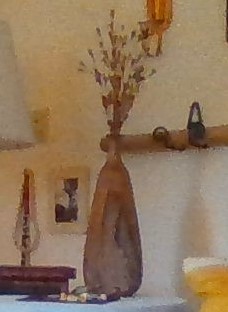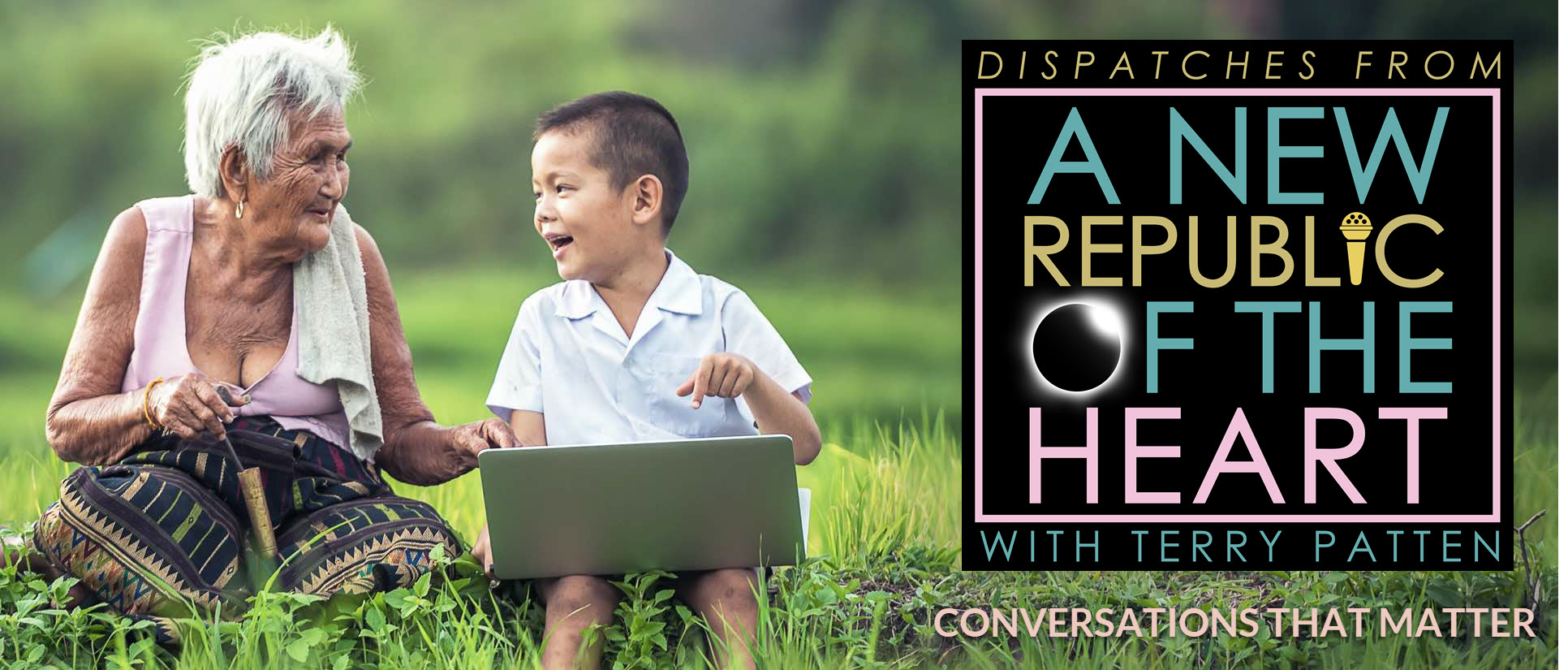The Vase
Almost three years ago, an elderly holy man and artist I was acquainted with was disposing of artwork and artifacts he had created or acquired during many years of supporting poor and disenfranchised people in Central America. While I too am in the process of scaling back, I wanted something to keep as a reminder of this man’s generous and creative life. With this in mind, a friend and I visited him at his home in Connecticut on a beautiful Sunday morning in the early fall of 2018. True to our hopes, each of us came away from the visit with a remembrance and a treasure.
Mine is a very unusual vase, carved from beautiful wood. It stands about fifteen inches high and has a delicate shape. At the time, what attracted me most to the vase was its tapering neck, arising from a base that is in decomposition. It reflects, I think, the beauty of the natural world rooted in organic change and loss. I placed this beautiful and unique vase on a shelf in my living room where it remained until recently; it has continuously revealed previously unnoticed markings, and on a deeper level, drawn me toward insights into the complexity that characterizes life and the world we live in.

Warm Data
This observation connects me to the work of the complexity thinker Nora Bateson, whose work regarding Warm Data I first heard of through a conversation within a New Republic of the Heart Social Experiment break-out session some months ago. Bateson’s work asks the question, “How can we improve our perception of the complexity we live within, so we may improve our interaction with the world?”
According to Bateson, Warm Data is information that lies beyond cold facts and includes all that the heart knows and is tending to about life situations as they intersect and interact. She has developed a methodology for engaging people with each other as a form of practice that is aimed at enhancing one’s capacity for making the kind of decisions that today’s complex world invites. Critical to the methodology is establishing transcontextual frames for holding conversations, for example, looking at a question using art, nature, and psychology as the transcontextual frame. Ideally, the conversations are held face-to-face.
With my interest piqued, via Zoom I joined an international series of training sessions about using Warm Data in conversations. Because the group meets only once a month, I would like to be able to practice what I am learning in real face-to-face conversations between sessions. However, in this time of pandemic and limited possibilities for interacting directly with others, I have let my vase challenge me to think, at least, in Warm Data terms. In other words, day by day, I am trying to think of the vase within a transcontextual range, remaining attentive to what my heart is noticing.
Following are two of the connections I have become aware of in this gentle process.
The Eye
High in the middle of the decomposing area of the vase I see in its markings an eye. In the past, in other contexts, my attention has been drawn regularly to the symbolism of the eye. Now though, I had a strong sense that there was something new and different presenting itself, a question being posed, waiting to be answered. This intuition was confirmed when I listened to the State of Emergence podcast featuring Karine Bell. Immediately I recognized the significance of the question posed by Bell, What have I had my eye on, always? Instantly I had a sense of synchronicity. This question has been troubling me at the edge of my consciousness for months, albeit without finding clear formulation. Also, I am approaching a significant birthday. Such an occasion gives rise to examining one’s life, to see clearly what the trajectory has been and what remains to be done. This then, is what I see: I have been drawn to the holy all my life in ever changing expressions, aligned with my experiences and insights. Succinctly said, I have had my eye on the sacred, always. I feel pleasure and deepest joy in this realization.
According to Nora Bateson, it is essential to become aware of patterns, and patterns within patterns, in order to make the best possible decisions about complex life situations. I can see how the central pattern of my life has spawned other interrelated and more and more complex patterns. Now what remains is to make the best possible decisions about my life going forward undergirded by its fundamental pattern.
The Shadow
At the beginning of the summer I spent a little time playing around with the décor of my apartment. In my fiddling, I removed the vase from the shelf where I had previously placed it and put it down on a table. Right away, I was taken aback by the shadow cast on the wall behind the vase. My surprise was caused by the fact that for a long time I had tried to determine what I could place on the wall in that space. I could never quite figure out what belonged there. It seemed now that the shadow belonged there. Furthermore, it invited interpretation.
In his podcast with Charles Eisenstein, Terry Patten spoke of giving “attention to what has been cast into shadow.” It seems that the invitation to me in these times is to shed as much light as I can on the shadow of racism as it exists within myself. While I am only a novice in applying Warm Data thinking, I have been attending to its framework, keeping multiple contexts in mind. This is important because of the interplay of racism with various aspects of society, as in health, justice, employment. This means practicing thinking in a manner that takes into account the complexity underlying racism, ultimately, in order to be of benefit to society.
In the State of Emergence podcasts I found thinking that I had not come into contact with previously. I admired the way Charles Eisenstein refers to our common humanity and the fundamental and age-old insight of relating with all persons lovingly, without patronizing anyone, without hidden agendas, with authenticity, as the manifestation of the sacred essence of the world. I found this refreshing and beautiful. I found a similar note in Spring Washam’s podcast. She urges everyone to do their racism work as best they can, with compassion and determination. Both Washam and Karine Bell speak of creating spaces where the traumas of racism can be processed safely. They emphasize that because the wounds caused by racism to Black people and to White people are different, it is acceptable, and sometimes necessary, to meet separately, as Black people or White people, to do our processing and begin the work of recovery. In Gibrán Rivera’s podcast I was touched by the words “forward facing remembering.” In each of these podcasts I found energy as well as new learning. I did not expect this when I set out to explore the shadow on my wall.
Representative John Robert Lewis
The vase has spoken of other points that flow from Warm Data thinking, but for now, I complete this reflection. It is the day of the funeral of Representative John Robert Lewis. Lewis was a man drawn to the sacred, who was faithful to the pattern of his life in its expanding manifestations. He was able to bring spiritual, judicial, and political conviction to the decisions of society. He is part of the gentle process that shows our human possibilities, especially in this time of heightened racial tensions and the need to think with depth and act with knowledge and wisdom. He knew what he had his eye on, always.


0 Comments